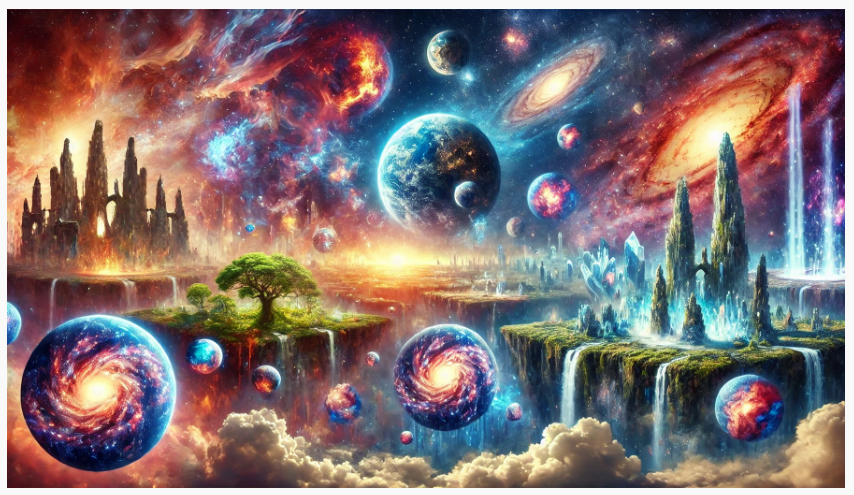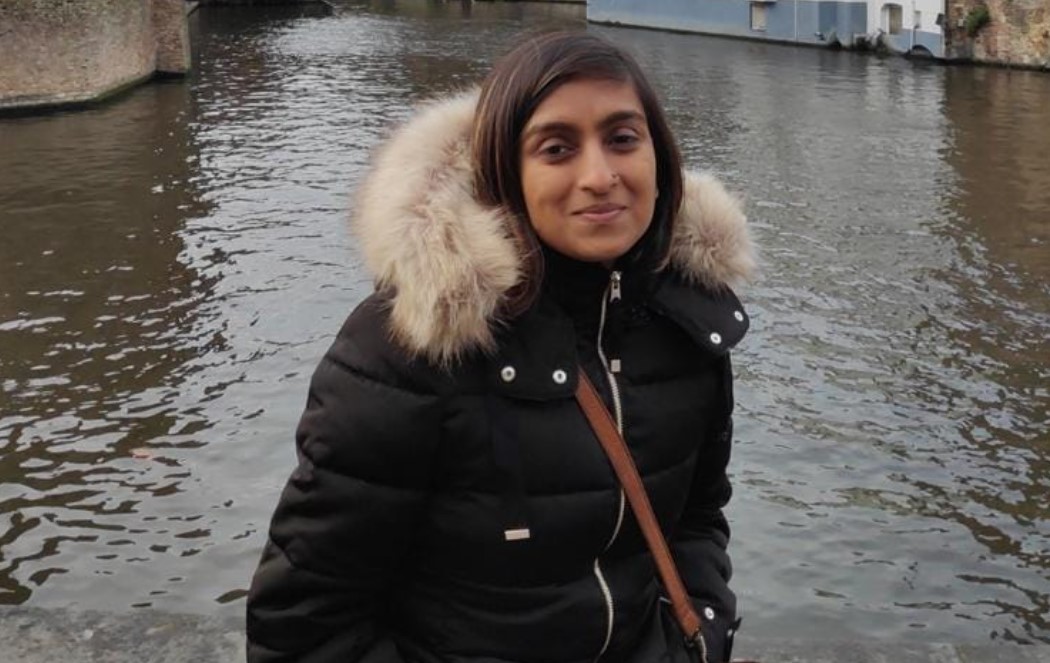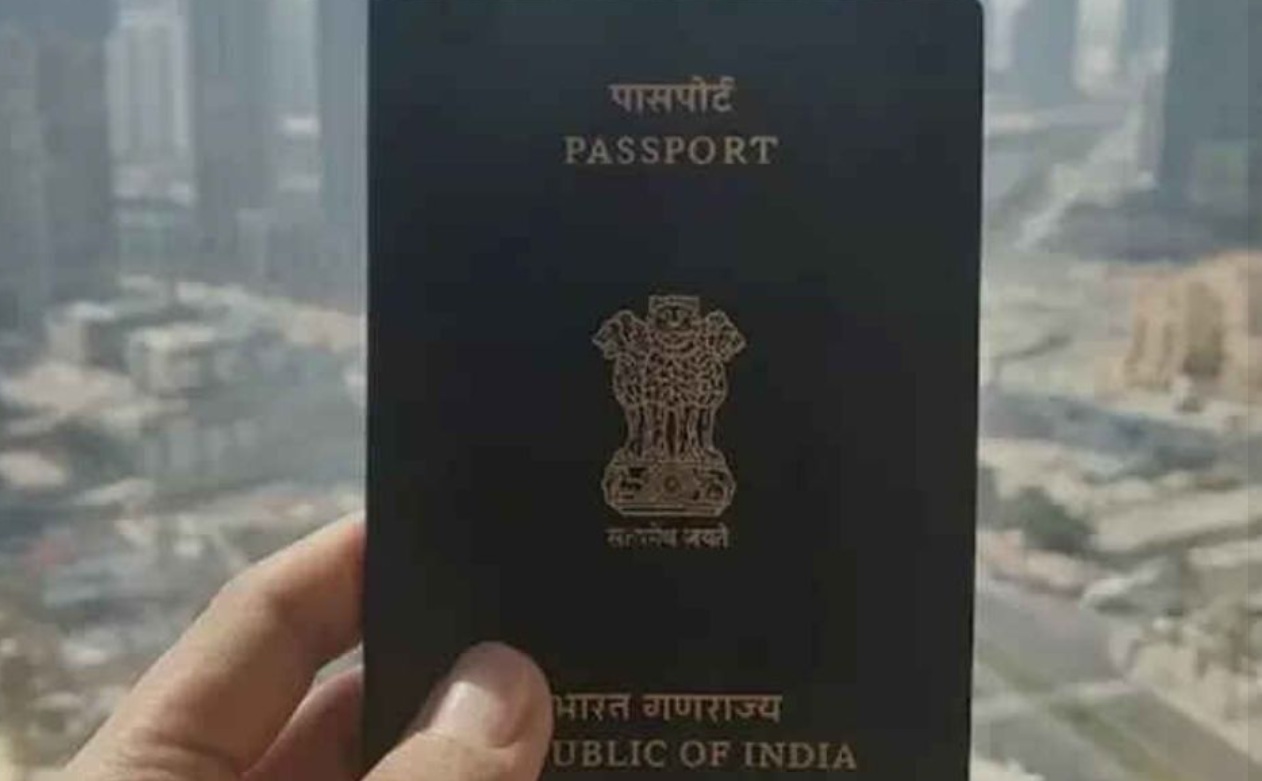
The idea of parallel universes, or the multiverse theory , has fascinated science fiction fans, philosophers, and scientists alike for decades. At its core, the multiverse theory suggests that there could be multiple, possibly infinite, universes existing simultaneously, each with its own distinct laws of physics, constants, and even versions of reality.
While the concept sounds like a theme from a sci-fi movie, it is rooted in some of the most advanced and perplexing scientific ideas, especially in quantum mechanics and cosmology .
Interestingly, the multiverse theory also resonates with ancient philosophical ideas, particularly those from Hinduism’s Vedic texts , which contemplate multiple planes of existence. By exploring the interplay between these ancient ideas and modern scientific concepts, we gain new insights into the mysteries of our universe.
Quantum Mechanics and the Multiverse: The Many-Worlds Interpretation
The multiverse theory in modern science has a strong connection to the field of quantum mechanics . In quantum physics, particles exist in a state of superposition, meaning they can occupy multiple states simultaneously until they are measured or observed. This phenomenon is famously illustrated by the thought experiment of Schrödinger’s cat , where a cat in a box can be considered both alive and dead until someone opens the box to observe it.
To explain this, Hugh Everett III proposed the Many-Worlds Interpretation (MWI) in the 1950s. According to this interpretation, whenever a quantum event occurs, the universe “splits” into different versions, each corresponding to a different possible outcome of that event. For example, in one universe, Schrödinger’s cat is alive, while in another, it is dead. Every quantum decision creates a “branch” in the multiverse, resulting in countless parallel realities.
In this framework, our universe is just one of many, each following different outcomes based on quantum events. This not only challenges our understanding of reality but also suggests that every choice we make creates an alternate universe where a different decision was made. However, this remains a theoretical interpretation , as direct evidence of these alternate worlds remains elusive.
Cosmology and the Inflationary Multiverse
Beyond quantum mechanics, cosmology offers its own insights into the multiverse through the theory of cosmic inflation . According to this theory, the universe underwent a rapid expansion immediately following the Big Bang . This inflation could have caused “bubbles” of space to form, each representing a separate universe with its own distinct laws of physics and constants.
These “bubble universes” are thought to exist within an overarching multiverse. In each bubble, the fundamental constants—such as the speed of light, gravitational force, or the nature of matter—could differ. Some universes may be entirely inhospitable to life, while others, like ours, have conditions perfectly suited for the emergence of life.
This inflationary multiverse theory could provide answers to the fine-tuning problem, which asks why the constants of our universe are perfectly calibrated to support life. In an infinite multiverse, it would be inevitable that at least one universe—ours—would have the right conditions for life, purely by chance.
Multiverse and the Vedas: Parallel Universes in Hindu Philosophy
Long before modern science explored the concept of the multiverse, ancient Hindu texts, particularly the Vedas and Upanishads , spoke of multiple planes of existence. In Hindu cosmology, the universe is cyclical, constantly going through cycles of creation, preservation, and destruction. The idea of parallel realities is also present in the Puranas , where stories describe multiple realms or lokas , each with different characteristics and inhabitants.
These lokas are thought to coexist simultaneously but are not necessarily accessible to one another in the same way we perceive our universe. For instance, the Bhagavad Gita speaks of Brahmaloka (the realm of Brahma, the creator) as the highest plane of existence, beyond the ordinary material world. Similarly, Patalaloka and Svargaloka represent lower and higher realms, respectively, suggesting a kind of cosmic multiverse.
The idea of multiple realities or dimensions is central to Hindu metaphysical thought. It resonates with the multiverse theory in modern science, which suggests the existence of parallel universes with different physical properties. In both quantum mechanics and the Vedas, reality is seen as multilayered and more complex than the simple linear world we perceive.
Quantum Mechanics, Consciousness, and the Vedas
Quantum mechanics not only deals with particles and waves but also brings up questions about consciousness and its role in shaping reality. In some interpretations, such as the Copenhagen interpretation , a quantum system does not have a definite outcome until it is observed, suggesting that consciousness might influence the collapse of the wave function.
This raises intriguing questions about the relationship between the observer and the observed. Ancient Vedic teachings emphasize the interconnectedness of consciousness and reality, particularly in the Vedanta philosophy , which suggests that the ultimate reality (Brahman) is non-dual and that the material world is a manifestation of that consciousness.
In a way, both quantum mechanics and the Vedic worldview point toward a more holistic understanding of reality, where the material and non-material realms (or consciousness) are intertwined.
Challenges and Criticism of the Multiverse Theory
While the idea of the multiverse is captivating, it remains highly theoretical and is criticized for being difficult to test or prove empirically. Critics argue that since we cannot observe or measure these parallel universes, the theory runs the risk of being non-falsifiable —one of the key criteria in the scientific method.
In the context of quantum mechanics, interpretations like the Many-Worlds Interpretation are elegant but still speculative. The cosmological multiverse concept also faces challenges, as detecting evidence of other universes is beyond the reach of current technology.
However, proponents of the multiverse argue that even if direct evidence is unattainable, the theory could still help explain some of the most puzzling aspects of cosmology and quantum mechanics, including the nature of dark matter, dark energy, and the fine-tuning of the universe.
Conclusion: The Multiverse as a Bridge Between Science and Philosophy
The multiverse theory continues to push the boundaries of human understanding, blending the worlds of quantum physics , cosmology , and even philosophy . From the Many-Worlds Interpretation in quantum mechanics to the inflationary bubble universes of cosmology, modern science is exploring the possibility of parallel realities.
Interestingly, these concepts echo ideas found in ancient Hindu texts , which also contemplate the existence of multiple worlds and planes of existence. The Vedic cosmology offers a fascinating parallel to the scientific notion of the multiverse, showing that humanity’s search for understanding reality transcends both time and culture.
Whether or not the multiverse is real, it has profound implications for our understanding of existence. It challenges us to rethink the nature of reality and inspires new lines of inquiry, both scientific and philosophical, in our quest to unravel the mysteries of the universe.





